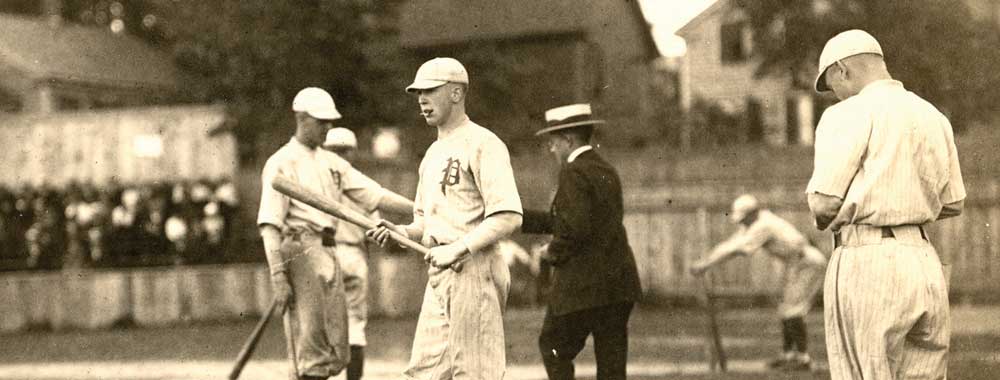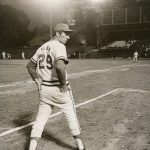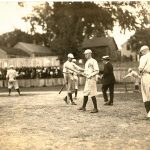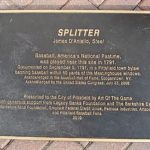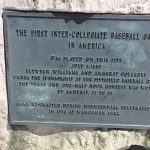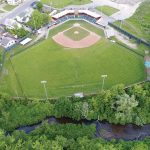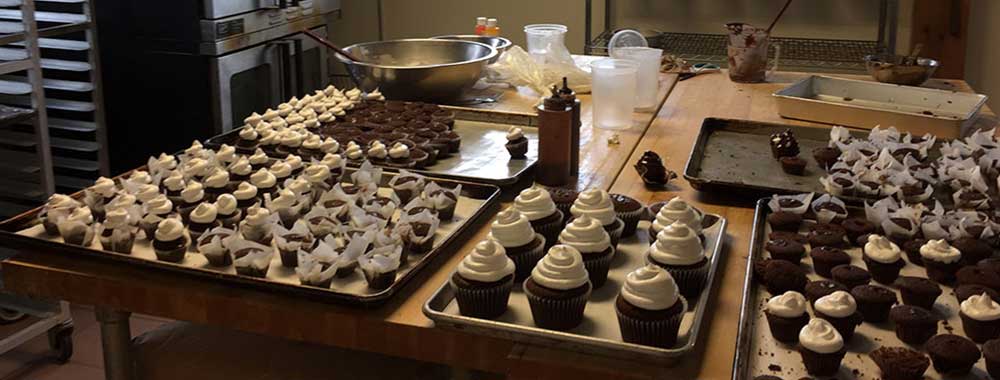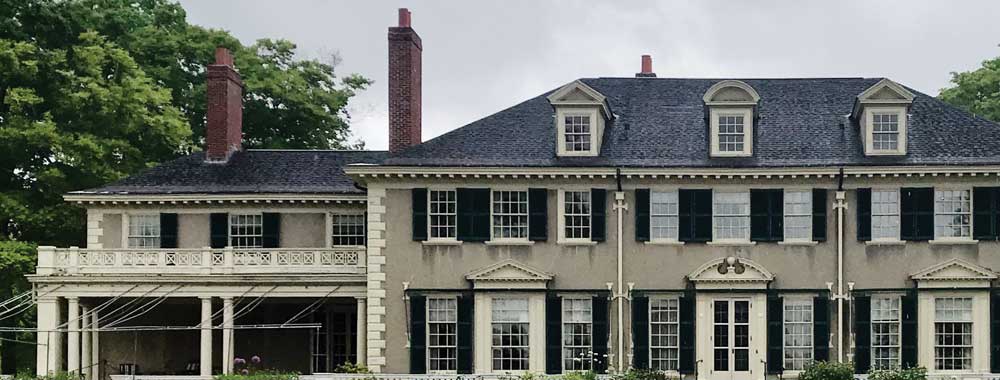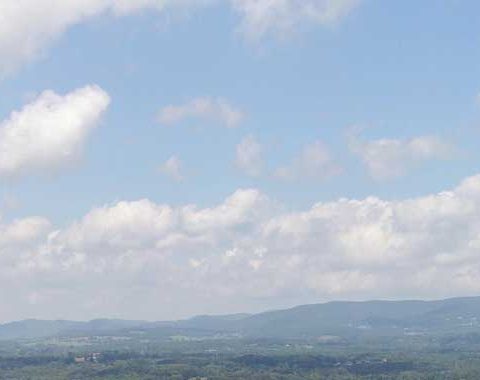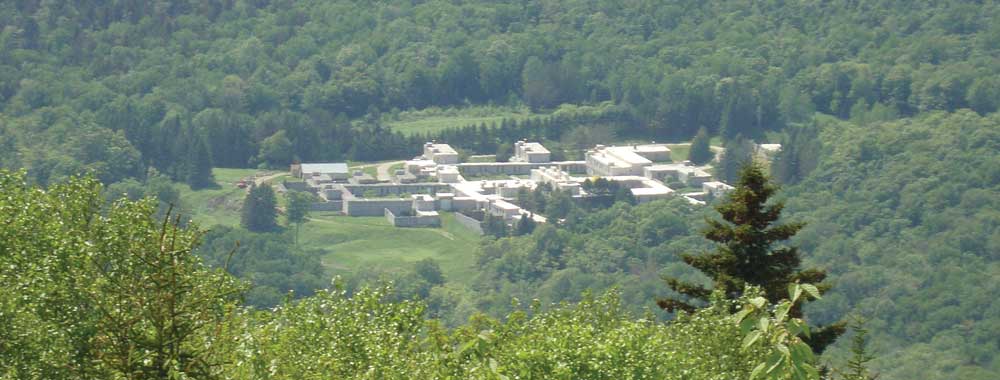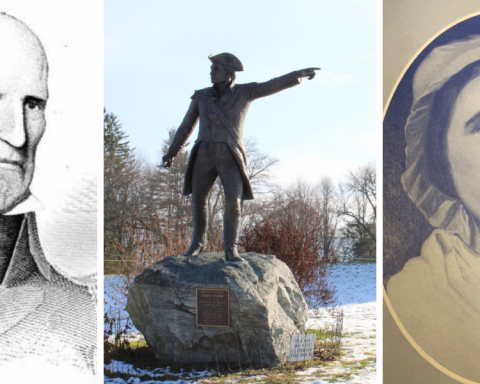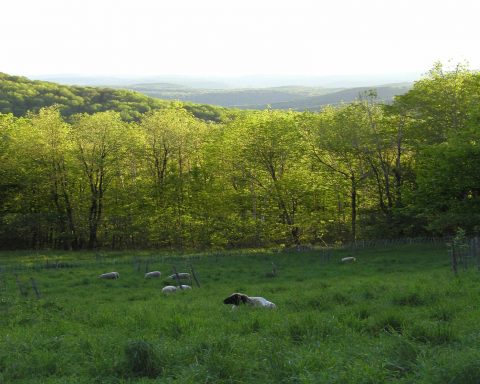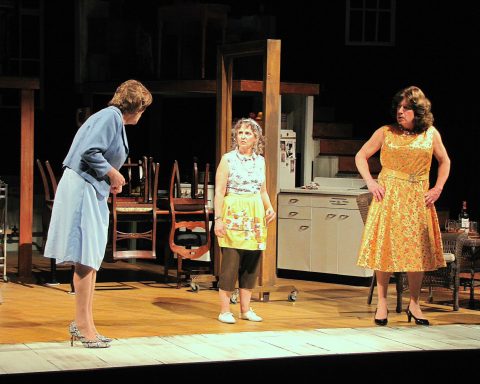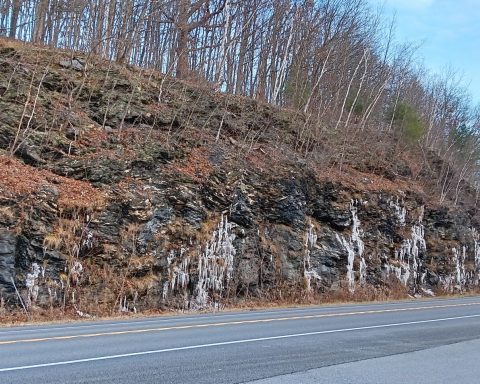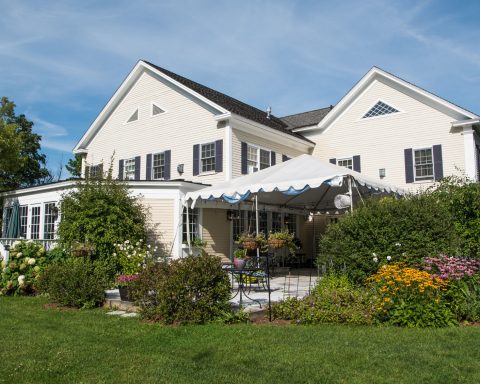
By Rebecca Sheir
In the middle of the Berkshire Mall, what was once a national clothing chain is now a home base for America’s pastime.
“It’s about 3,500 square feet, and I think we’ve got every inch taken care of,” says Larry Moore, co-author of “Baseball in the Berkshires: A County’s Common Bond” and director of the nonprofit Baseball in the Berkshires Museum.
Since taking over the former Eddie Bauer space in spring 2017, Moore and his partners have collected more than 1,200 artifacts telling baseball’s story in Berkshire County. Dating back to the 1800s, the memorabilia represent everything from Little League to American Legion teams to the majors and minors.
“And we get these things from the people of Berkshire County,”explains Moore, a lifelong baseball fan and former physical education teacher and coach. “Nothing has been bought. Everything was donated or loaned to us.”
Perusing the autographed balls and uniforms, the pennants and posters, the score cards and photographs, you’d never know you’re in a former outerwear store.
Until you reach the fitting room.
Only now, it’s the “kids locker room,” where burgeoning baseball fans can gaze in the three-way mirror as they try on professional uniforms, mitts and catchers’ masks.
They also can compare their handprints, footprints and heights with those of pro players who were born or raised in the Berkshires or who settled here. The tallest is Pittsfield’s Chad Paronto (6 feet, 4 inches) who pitched for the Baltimore Orioles, Cleveland Indians, Atlanta Braves and Houston Astros. The shortest: North Adams native Jack Chesbro (5 feet, 9 inches) and Pittsfield-born, Williamstown-raised Frank Grant (5 feet, 7 inches).
But Chesbro and Grant were only small in stature. The historical giants are the Berkshires’ only native sons in the National Baseball Hall of Fame.
Major League pitcher “Happy Jack” Chesbro was born in 1874; his 41-win record from the 1904 season remains unbeaten.
Ulysses F. “Frank” Grant was born in 1865; Moore and his fellow “Baseball in the Berkshires” authors call the African-American second baseman “the best ballplayer of the era.”
The color line kept Grant from the majors. So this “slick fielder with a strong arm” (to quote his plaque in Cooperstown) flourished in the minors. He also captained top-notch touring black teams like the Cuban Giants and Cuban X-Giants. You can learn more about both teams in the museum’s black history display, showcased in the front window.
When you visit the Baseball in the Berkshires Museum, you’ll see that baseball was popular in the county long before Chesbro and Grant laced up their cleats.
Case in point: A facsimile of a statute you’ll find on the museum’s back wall. Pittsfield created this bylaw in 1791, after erecting a new meetinghouse.
The meetinghouse “was designed by Charles Bulfinch, an architect who contributed to the Boston State House and the Capitol in Washington, D.C.,” explains “Baseball in the Berkshires” co-author Jim Overmyer. “And it had glass windows, which were a treat around here and expensive to replace.”
The Bulfinch meetinghouse faced the town common, where people loved playing games — especially games with balls.
“So in 1791, the local government passed an ordinance banning a long list of games with a ball that couldn’t be played near the meetinghouse,” Overmyer says. “They didn’t want the windows broken.”
That list included “wicket,” “cricket,” “football,” and a little something called “baseball.” Historians agree that it’s one of the first written references to the sport in the United States.
Pittsfield scored another run in baseball history nearly 70 years later, when Amherst challenged Williams to a game. The rivaling colleges sought a “neutral site” for the match, and the Pittsfield Baseball Club made them an offer they couldn’t refuse.
The teams played July 1, 1859, on a lot in front of the Maplewood Young Ladies Institute. The museum features an elegant charcoal sketch of the all-girls’ finishing school, which once stood east of North Street.
Overmyer describes the choice of Maplewood as “ironic.” Seeking more classroom space, the school had recently purchased a building from the city, then relocated it to campus.
That building was none other than the Bulfinch meetinghouse.
“So the baseball game was played next to the building that everyone had worked so hard to protect from baseball in 1791,” Overmyer says.
Luckily, no windows were broken during the Williams-Amherst game, though it lasted 26 innings.
“[Baseball] was very free-form in those days,” Overmyer explains. “Nobody had gloves, there was no foul territory. The ball could go anywhere.”
Amherst trounced Williams, 73 to 32. Alumni from both schools recreated the game in 1959 and 2009. You can view their replica uniforms at the museum.
The centennial and sesquicentennial re-enactments of the Williams-Amherst match happened at Wahconah Park, built along the Housatonic River in 1892.

The museum devotes an entire section to the park, which made the National Register of Historic Places in 2005.
Wahconah Park is one of the last remaining baseball stadiums with a wooden grandstand. It’s also one of two professionally used parks that “face the wrong direction for today’s baseball,” explains Tom Daly, museum president and another “Baseball in the Berkshires” co-author.
In the olden days, teams only played when it was light out. With the advent of night games in the 1930s, batters and catchers at Wahconah Park found themselves squinting into the sun as it set behind center field.
“So they have to stop the baseball game for about 20 minutes,” Daly says. “They have sun delays, much like a rain delay.”
Wahconah Park is also one of the nation’s oldest ballparks with an active team: the appropriately named Pittsfield Suns. You can watch highlights from their most recent season at the museum.
You also can learn about Wahconah teams of yore, and the Major Leaguers they produced. Hall of Famer Carlton Fisk played for the Pittsfield Red Sox, as did Reggie Smith. Joe Girardi was a Pittsfield Cub. The Pittsfield Electrics helped launch legendary player and manager Al Rosen: The only man in baseball history to win both MVP and Executive of the Year.
The museum includes artifacts from dozens of Major League players born or raised in the Berkshires: baseballs signed by pitcher and Dalton native Jeff Reardon, a photo of Pittsfield High School graduate Art Ditmar with the 1961 Yankees.
Larry Moore points to a baseball bat mounted vertically on a base, with a platter on top.
“The great Dale Long, who played for the Pirates, was from Adams,” Moore says. “This is his bat that was turned into sort of a ’60s-type thing: an ashtray!”
Then there’s Pittsfield native Steven John “Turk” Wendell, who pitched for the Chicago Cubs, New York Mets, Philadelphia Phillies and Colorado Rockies.
The museum has Wendell’s uniform from the 2000 World Series, along with a photo of the trademark necklace he fashioned from claws and teeth of animals he’d hunted. There’s also a list of Wendell’s legendary quirks, like chewing black licorice on the pitcher’s mound, then brushing his teeth in the dugout.
Accordingly, Wendell’s museum display features a bag of licorice and a toothbrush.
Twice a month, the Baseball in the Berkshires Museum hosts the “Golden Age of Baseball,” where players and fans of yesteryear reminisce about the good old days.
Charles Garivaltis, a 1952 Pittsfield High School graduate, is a regular. The All American Amateur Baseball Association Hall of Famer’s AAABA trophy is on display at the museum.
“There’s quite a legacy we have here in this community,” says Garivaltis. “It surprises people because it isn’t like you’re in Florida or Texas; we have a lousy spring sometimes. Yet baseball seems to have historically been our sport.”
Al Belanger, a former St. Joseph’s High School baseball coach and 1957 Pittsfield High School graduate, agrees. His brother, Mark, was a Major League shortstop. On view at the museum is a trailer from an upcoming documentary about “The Blade,” who died of lung cancer in 1998.
Belanger thanks the Baseball in the Berkshires museum for bringing local baseball history to life — from the legendary to the lesser-known.
“The first time I saw this, I knew what some parts would be,” he says. “But my God, there’s a lot! I probably knew 10 percent.”
“It’s unbelievable,” he adds with a proud smile and a misty eye. “Absolutely unbelievable.”
Run the bases of Berkshire County baseball history
Click below for a tour of Berkshire County baseball historical sites.
1791: On the south side of Pittsfield’s Park Square is a plaque commemorating the “1791 Broken Window Bylaw.” “Splitter,” the steel baseball sculpture that originally accompanied the plaque, has been removed for repairs.
1859: A plaque commemorating the first intercollegiate baseball game is at North and Maplewood streets in Pittsfield.
1892: Wahconah Park is nestled in a neighborhood off Wahconah Street in Pittsfield. The ballfield is so close to houses, residents often find fly and foul balls in their yards!
If you go …
The Baseball in the Berkshires Museum is open from noon to 6 p.m. on Fridays, Saturdays and Sundays. It is located at the Berkshire Mall on Route 8 in Lanesborough, Mass.
Rebecca Sheir is a veteran public radio reporter and host. She has been on “All Things Considered,” “Morning Edition,” “Marketplace,” “Here and Now,” “The Splendid Table” and the Alaska Public Radio Network. She currently hosts/writes/produces “Circle Round,” WBUR’s storytelling podcast for kids and grown-ups.
